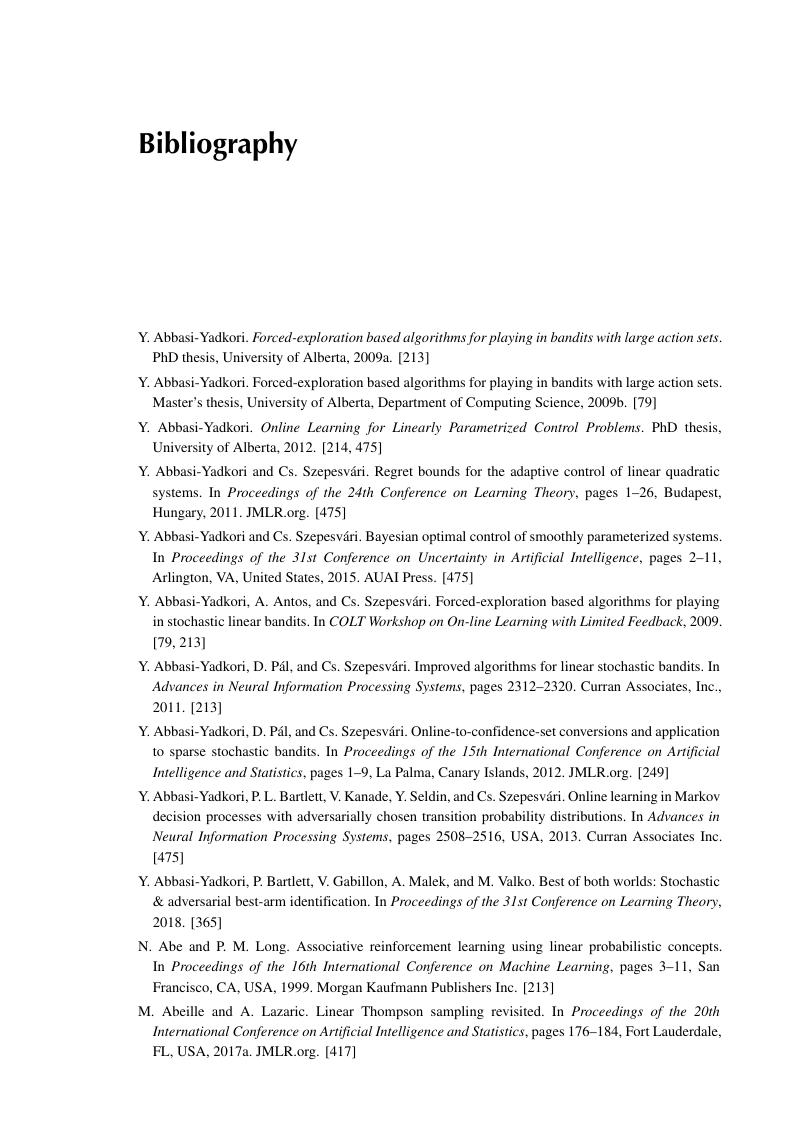Book contents
- Frontmatter
- Contents
- Preface
- Notation
- Part I Bandits, Probability and Concentration
- Part II Stochastic Bandits with Finitely Many Arms
- Part III Adversarial Bandits with Finitely Many Arms
- Part IV Lower Bounds for Bandits with Finitely Many Arms
- Part V Contextual and Linear Bandits
- Part VI Adversarial Linear Bandits
- Part VII Other Topics
- Part VIII Beyond Bandits
- Bibliography
- Index
- References
Bibliography
Published online by Cambridge University Press: 04 July 2020
- Frontmatter
- Contents
- Preface
- Notation
- Part I Bandits, Probability and Concentration
- Part II Stochastic Bandits with Finitely Many Arms
- Part III Adversarial Bandits with Finitely Many Arms
- Part IV Lower Bounds for Bandits with Finitely Many Arms
- Part V Contextual and Linear Bandits
- Part VI Adversarial Linear Bandits
- Part VII Other Topics
- Part VIII Beyond Bandits
- Bibliography
- Index
- References
Summary

- Type
- Chapter
- Information
- Bandit Algorithms , pp. 484 - 512Publisher: Cambridge University PressPrint publication year: 2020



